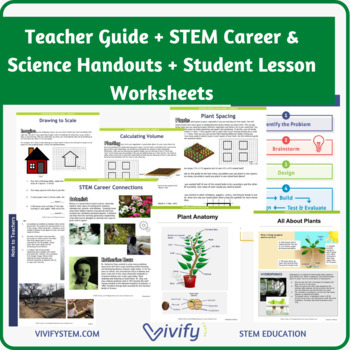Design a School Garden: STEM Project Guide
- PDF
What educators are saying
Also included in
- Are you in need of year-round STEM activities? This growing bundle includes ALL Vivify K-12 STEM lessons from team challenges, engineering design, semester-long STEM units, research projects, and more! Purchase everything for 20% off individual products! Here is a sample of what is included: Stage 1Price $990.24Original Price $1237.80Save $247.56
Description
Design a school garden! Take your STEM or STEAM classroom or program to the next level with this in-depth engineering design STEM challenge. Students will apply scientific concepts, math skills, critical thinking, research, and engineering design to plan a long-term school garden for growing vegetables and other plants. This creative and in-depth project is a great activity for your classroom or afterschool program!
Designing a school garden is a multidisciplinary project where creative and critical thinking a central part of the process. Students will need to consider plant needs and spacing requirements as well as budgeting their materials needed.
Students learn about drawing designs to scale, plant anatomy, botany, plant spacing and companion planting while designing their garden plan. They then use the engineering design process and their garden designs to build a 3D model of their school garden.
STEM Garden Design Challenge Project Guide Includes:
- Detailed teachers guide with links to resources
- Photos of prototype examples
- Science and STEM Career connection handouts
- Student lesson worksheets to guide students through lessons on the math involved in drawing to scale, calculating volume of materials, and plant spacing.
- Student design packet with a budgeting guide, pricing reference sheets, graphing paper, plant reference information, and a short essay worksheet
- Student handouts to guide students through the engineering design process while building their 3D model
- Student recording sheet for each step of the process
Looking for more STEM lessons? Our team of engineers and educators is dedicated to developing low-prep and high-quality STEM activities for any classroom! Click below to learn more:
- Vivify's Scope & Sequence + Standards Alignment
- Vivify's Resource Guide
- Learn about the 3 Stages of STEM
- Vivify STEM Membership
Customer Tips:
• Click the Green ★ to follow our store and get notifications of new products and freebies
• Leave feedback to receive TpT credit for use on future purchases
• Questions? Contact us in the Product Q&A section
♥ Connect With Us ♥
Email us: info@vivifystem.com





